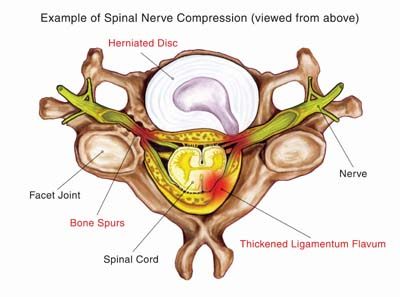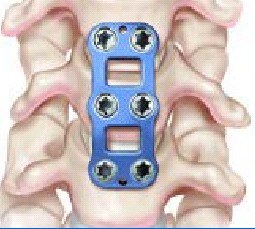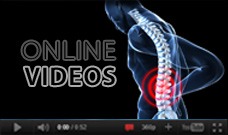Anterior Cervical Discectomy and Fusion
Anterior cervical discectomy and fusion (ACDF) is a surgical procedure used in the management of spinal cord and nerve root compression secondary to certain disorders such as degenerative disc disease, herniated disc, spondylosis, and spinal stenosis. ACDF reduces the neck and arm pain and provides stability to the spine.
| Term |
Meaning |
| Anterior |
Front of the body |
| Cervical |
Neck |
| Discectomy |
Surgical removal of an intervertebral disc |
| Fusion |
Join (fuse) 2 or more vertebral bodies |
Before the surgery, the neurosurgeon explains the details of the procedure to the patient including the possible risks and complications such as infection, bleeding, nerve damage and reaction to anesthesia.
A minimally invasive approach may be employed in some individuals depending on their diagnosis, medical history, earlier treatments and other factors.

A general health clearance from a general physician is essential for the surgery. This assessment may comprise of blood tests, X-rays or other imaging studies, along with special tests for the diagnosis of other medical problems such as diabetes and cardiac disease.
Procedure
Anterior cervical discectomy and fusion is performed under general anesthesia. During the surgery, different gauges, monitors, and equipment are employed, which provides the visual and audio feedback to the surgeon. All the vital functions, including central nervous system are carefully monitored throughout the procedure. Image guidance such as real time x-ray or fluoroscopy helps the neurosurgeon to visualize the surgical field during the surgery. The essential steps involved in minimally invasive ACDF are as follows:
- The patient is placed on a padded operation table, facing up
- The cervical level of the patient is confirmed by real time X-ray
- An incision is made in front of the neck through one of the natural folds to disguise scarring
- Then muscle and other soft tissues are pulled aside to expose the intervertebral disc
- A discectomy is carried out to remove the entire disc or a portion of it
- A block of bone or cage (s) is placed in the disc space. A bone graft may be used to fill this space
| Bone graft type |
What it is |
| Autograft |
Bone from your body |
| Allograft |
Donor bone |
- The spinal cord and nerve roots are further decompressed by removing the bony outgrowths such as bone spurs, osteophytes, and thickened ligament or other tissues
- The space between the upper and lower vertebral bodies is restored. This helps in decompression of the neural structures by enlarging the normal pathway of the nerve
- Extra bone graft is filled around the disc space
- The anterior portion of the spine is fixed with a cervical plate using bone screws to stabilize the neck
- Finally, the incision is sutured and dressed

Post-operative care
After the surgery the patient is brought to the recovery area, where the medical staff monitors the vitals and also manages post-operative pain. Patients may experience pain at the site of incision, spasms of the neck muscles, or other symptoms. After the surgery, a cervical brace is placed on the neck of the patient.
Some of the common post-spine surgery instructions which the patient needs to remember are as follows:
- Schedule a follow-up appointment (call 281.446.3876)
- The incision should be kept clean and dry
- While taking a shower the incision should be covered
- Wear the cervical brace as instructed
- Avoid tub baths, but can go for swimming, or sit in a hot tub or pool
- Take rest as it helps rapid healing
- Start physical therapy and exercises as per the instructions of the surgeon
- Compliance to prescribed medications
- Avoid heavy lifting
- Encourage daily walking
- Avoid driving until cleared by the neurosurgeon
- Avoid smoking or the use of tobacco
- Eat a healthy and nutritious diet
Call your neurosurgeon's office for any of the following problems:
(281) 446-3876
- Rise in body temperature 101° F or higher
- Excessive swelling or redness at the incision site
- Increase in incision drainage or a change in its odor and appearance
- Severe pain at the incision site
- Bowel or bladder dysfunction
- Development of numbness in the genital region
|













